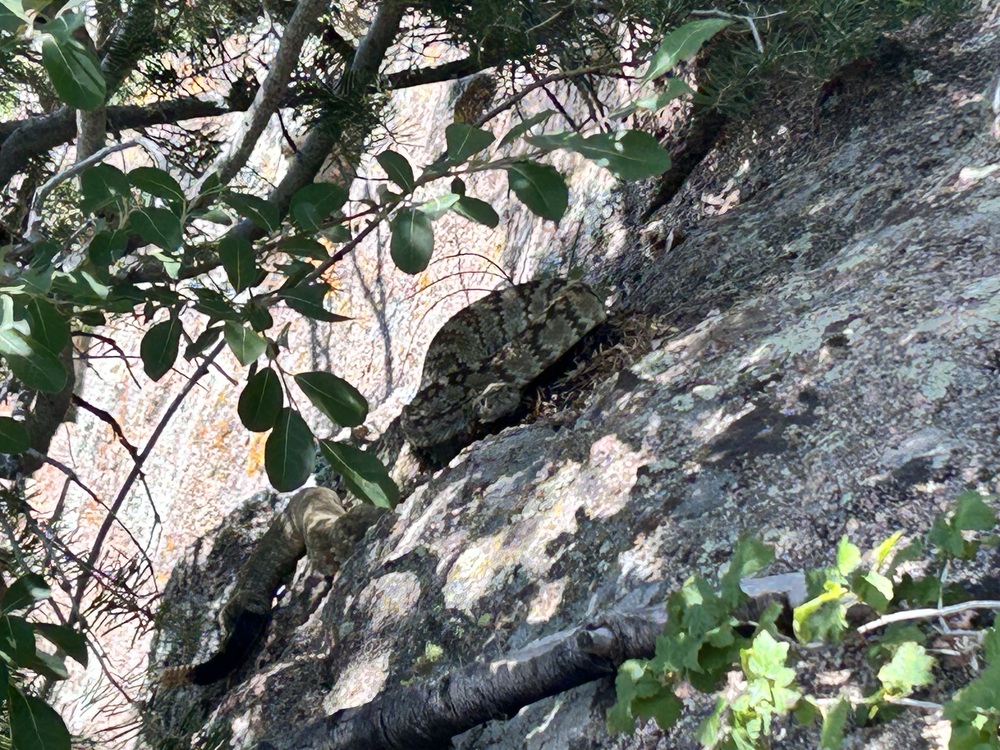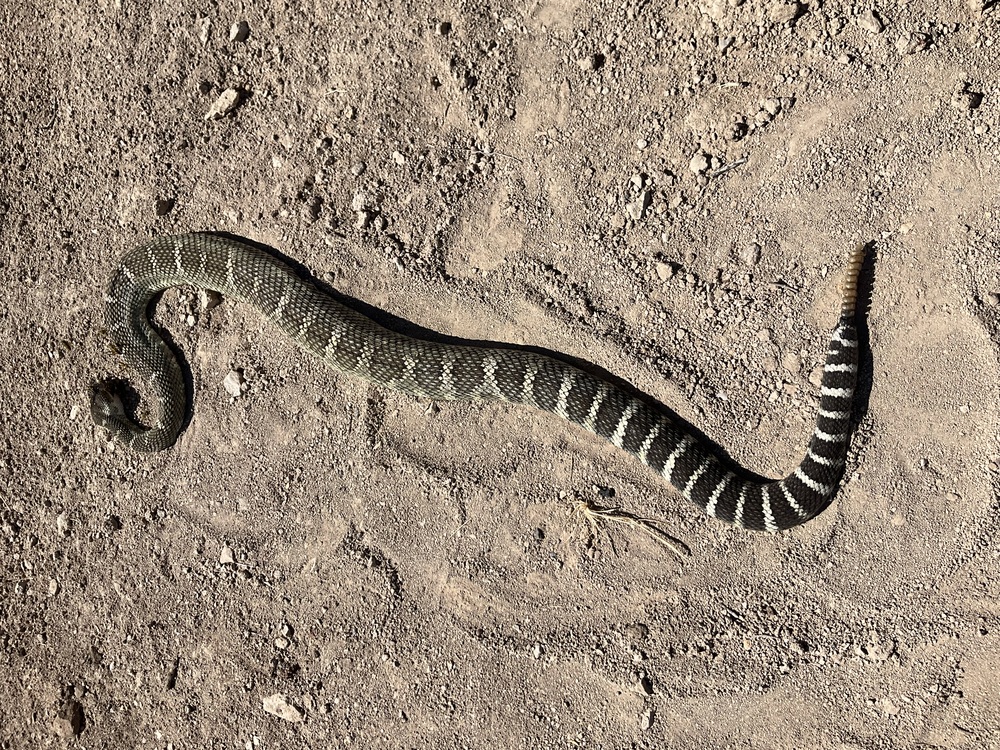Highest elevation for rattlesnakes?
|
|
This guy rattled at us yesterday from his shady spot high up in the Sandia Mountains at 10,000 feet. I’ve seen them much lower down the mountain but this one surprised me! I’m curious to know the highest elevation other climbers have seen a rattlesnake? |
|
|
They ALWAYS surprise me!! That is really high for a rattlesnake. I'm curious too. |
|
|
While on a SAR mission in the eastern Sierra, I encountered one on the way in to Davis Lake, which is the lowest of the Hilton Lakes group. The location was at 9,700 feet. |
|
|
Anna, Sandias at 10,000 ft sounds like a nice day out. There are studies from around the world documenting the phenomena which led your friend to rattle at you. Increasing temperatures are shifting the band of acceptable climates upwards. Animals, plants, and fungi move up as habitat lower becomes less accommodating. Temperature is not the only factor. Human populations are a factor too.
https://onlinelibrary.wiley.com/doi/full/10.1111/ddi.13146 Unfortunately, I cannot locate the study about the Rockies. Best, |
|
|
8000 feet in Catalinas north of Tucson. |
|
|
Lone Peak UT around 10,500 ft. In CO, the highest I've seen one is about 9,200 ft near Saguache in the San Luis Valley. Around Golden, I've seen them up to about 7,100 ft. |
|
|
11,000 ft Lone Peak. just down from the summit |
|
|
Wow highest i have seen has been about 7k. I need to start watching better in the top of the sandias apparently............. |
|
|
My dad swears he ran into a guy carrying a huge dead rattler down from a 10,000' pass near Tahoe in the 60s, presumably to eat. I jumped out of my work truck and almost onto a rattler last summer at 8,700' on Bartlett Mesa (between Raton and Trinidad). I'm told they're thick throughout Fishers Peak State Park, which ranges to 9,600'. That's cool that you spotted one up there, Anna! |
|
|
10,000+ feet at Coyote Flat in the Eastern Sierra near the high altitude air strip. |
|
|
Any guesses as to the limiting factor biologically? Average annual minimum temp, like with plant hardiness zones, or maybe minimum number of days/nights above certain T threshold for a productive warm season life cycle? They produce offspring towards August/September I think, may need some frost free time after that for little guys to establish. |
|
|
I'm sure someone has published on this, but it's fun to guess. My sense is that rattlers are pretty mobile. They're concentrated at/near the bases of east-facing crags here in the swing seasons, and seem to be quite dispersed in summer. I doubt they winter at 10,000', but I also doubted they swam until I saw it firsthand. |
|
|
This chonker hit a hard ceiling around 2800’ today… I think they generally have a pretty tight range, as small as a soccer field. Which is why I make an effort to either catch or dispatch from around heavier traffic areas (where theres growing populations). But I’m sure generationally they cover some ground seeking fresh territory. |
|
|
ben brownell wrote: Several California species including the red diamond rattlesnake are protected by federal law, so be careful when dispatching. All reptiles are protected in Washington under state law. Nobody cares and nobody enforces it however. Rattlesnakes can be found generally up to 12,000' in environments like the Sierras or central/Southern Rockies, that have a longer summer than Montana, Idaho, and Washington, which are rarely found above 4,000 feet sea level. Rattlesnakes do not "hibernate" but rather brumation or torpor, meaning they can still come out and bask on warm sunny days even during the winter. They are not a wandering species, usually living a rather small range their entire life, which makes them susceptible to being locally exterminated. Snakes such as Western terrestrial garter snakes and racers can have a range of many miles. |
|
|
Up here in the frigid north in Montana we have a few records for prairie rattlesnake up to 7500 ft. If I remember a presentation I saw for a population in southern Alberta, they had transmitted snakes migrating to hibernaculum at distances of a mile or two in the spring and fall. My guess is that the higher you go, the more important microclimates that provide good basking temperatures are. South facing rock outcrops probably allow them to extend their elevation by a few thousand feet. |
|
|
9,000 ft. Twenty years ago seeing a snake at 9,000 or 10,000 ft would be very unusual but as the climate gets increasingly hotter we will see snakes of all kinds at higher elevations. |
|
|
Kevin Mokracek wrote: Same, that's the highest place I've seen em as well, also at Mt Charleston(Vegas) I've seen em around 9000' but I cant recall seeing one at 10' |
|
|
My highest was Mt Charleston by Mary Jane falls but the most surprising was at the base of Snake Dike. |
|
|
Branon Rochelle wrote: I just come to expect seeing a rattlesnake anytime I'm approaching Half Dome, Ive seen them several times around Snake Dike and Little Yosemite Valley |
|
|
Have seen them at wild iris just a hair under 9k |
|
|
I’ve seen several in the Wasatch near 11,000ft! Mostly all of them near twin peaks summit on different traverses, they hang out in the talus field quite a lot right below the final ridge climb to the first summmit |

 Continue with onX Maps
Continue with onX Maps Sign in with Facebook
Sign in with Facebook


























